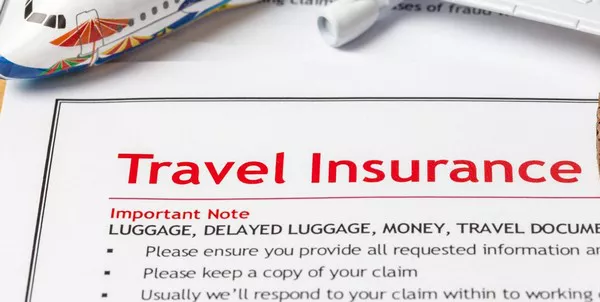Travel insurance is a crucial aspect of planning any trip, providing peace of mind and financial protection against unforeseen events. However, travelers sometimes wonder if they can hold more than one travel insurance policy simultaneously. This article explores the legality, implications, and best practices of having 2 travel insurance policies.
Legality of Multiple Policies
It is entirely legal to hold more than one travel insurance policy. There are no legal restrictions preventing travelers from purchasing multiple policies from different insurers. This can happen intentionally or unintentionally; for example, a traveler might buy a travel insurance policy and later realize that their credit card offers similar coverage. However, while it is legal, having multiple policies can lead to complications that travelers should be aware of.
Coverage Overlap
When two travel insurance policies cover the same events or losses, it can lead to coverage overlap. In such scenarios, policyholders might assume that they can file claims with both insurers to receive double the compensation. However, this is not typically how travel insurance works. Instead, insurers have mechanisms in place to prevent policyholders from profiting from multiple claims for the same loss.
Contribution Clause
Most travel insurance policies contain a ‘contribution clause,’ which addresses how insurers handle claims when multiple policies are in place. The contribution clause ensures that the cost of a claim is shared proportionately between the insurers based on the coverage limits of each policy. For example, if a traveler has two policies with coverage limits of $5,000 and $10,000, respectively, and they file a claim for $3,000, each insurer would pay a portion of the claim based on their policy limits.
Example Calculation:
- Policy A Limit: $5,000
- Policy B Limit: $10,000
- Total Coverage: $15,000
- Policy A Contribution: ($5,000 / $15,000) * $3,000 = $1,000
- Policy B Contribution: ($10,000 / $15,000) * $3,000 = $2,000
This approach prevents policyholders from receiving more than the actual loss amount while ensuring that insurers only pay their fair share.
Claim Process
Having multiple travel insurance policies can complicate the claim process. When filing a claim, policyholders must notify all relevant insurers and provide the same documentation to each. This can lead to delays as each insurer investigates and processes the claim. Additionally, policyholders may need to pay multiple excesses (deductibles), which can reduce the overall compensation received.
Steps to File a Claim with Multiple Policies:
- Notify all insurers about the incident and intention to claim.
- Provide detailed documentation, such as medical reports, receipts, and proof of travel, to each insurer.
- Cooperate with any investigations or additional information requests from each insurer.
- Wait for each insurer to process the claim and agree on the contribution amounts.
- Pay any applicable excesses as determined by each policy.
see also: Does Health Insurance Cover You On A Cruise?
Impact on Future Premiums
Claiming on two travel insurance policies for the same incident can result in an increase in future insurance premiums. Insurers record claims individually, so even though the incident is the same, it may be logged as two separate claims. This can affect the policyholder’s risk profile, leading to higher premiums when renewing or purchasing new insurance policies.
Recommendations
To avoid the complications associated with multiple travel insurance policies, consider the following recommendations:
Review Existing Coverage: Before purchasing a new travel insurance policy, check if you already have coverage through existing channels, such as your bank account, credit card, or employer benefits.
Choose Comprehensive Coverage: Select a travel insurance policy that offers comprehensive coverage for all your needs, reducing the likelihood of needing multiple policies.
Understand Policy Terms: Familiarize yourself with the terms and conditions of your travel insurance policy, including the contribution clause and any exclusions.
Consult an Insurance Agent: Speak with an insurance agent or broker to help you choose the right policy that fits your specific travel needs.
Excess Clause
The ‘excess clause’ in travel insurance policies refers to the amount the policyholder must pay out-of-pocket before the insurer covers the remaining costs of a claim. The excess amount can vary depending on the policy and type of claim. When holding multiple policies, the excess clause can affect the total amount received from a claim, as each policy may require a separate excess payment.
Example of Excess Payment:
- Policy A Excess: $200
- Policy B Excess: $300
- Total Claim Amount: $1,500
- After Excess Payment: ($1,500 – $200) from Policy A + ($1,500 – $300) from Policy B
In this scenario, the policyholder effectively pays $500 out-of-pocket, reducing the overall compensation received from the insurers.
see also: What to look for in travel insurance policy?
Practical Tips
Here are some practical tips for managing travel insurance policies and ensuring adequate coverage:
Ensure Adequate Coverage: Assess your travel needs and choose a policy that offers sufficient coverage for medical expenses, trip cancellations, lost baggage, and other potential risks.
Read Policy Details: Thoroughly read and understand the policy details, including coverage limits, exclusions, contribution clauses, and excess requirements.
Maintain Documentation: Keep detailed records of your travel plans, expenses, and any incidents that occur. This documentation will be crucial when filing a claim.
Communicate with Insurers: Notify your insurers promptly in the event of a claim and provide all necessary information to expedite the claims process.
Avoid Duplicate Coverage: Be mindful of duplicate coverage, such as travel insurance provided by credit cards, and consider opting out of unnecessary policies.
Conclusion
While it is legal to have multiple travel insurance policies, it is essential to understand the implications and manage the complexities that come with them. By being aware of coverage overlaps, contribution clauses, excess payments, and the potential impact on future premiums, travelers can make informed decisions and ensure they have the right level of protection for their trips. Taking the time to review existing coverage, select comprehensive policies, and understand policy terms will help travelers navigate the world of travel insurance with confidence and peace of mind.
[inline_related_posts title=”You Might Be Interested In” title_align=”left” style=”list” number=”6″ align=”none” ids=”1645,1610,1606″ by=”categories” orderby=”rand” order=”DESC” hide_thumb=”no” thumb_right=”no” views=”no” date=”yes” grid_columns=”2″ post_type=”” tax=””]




















